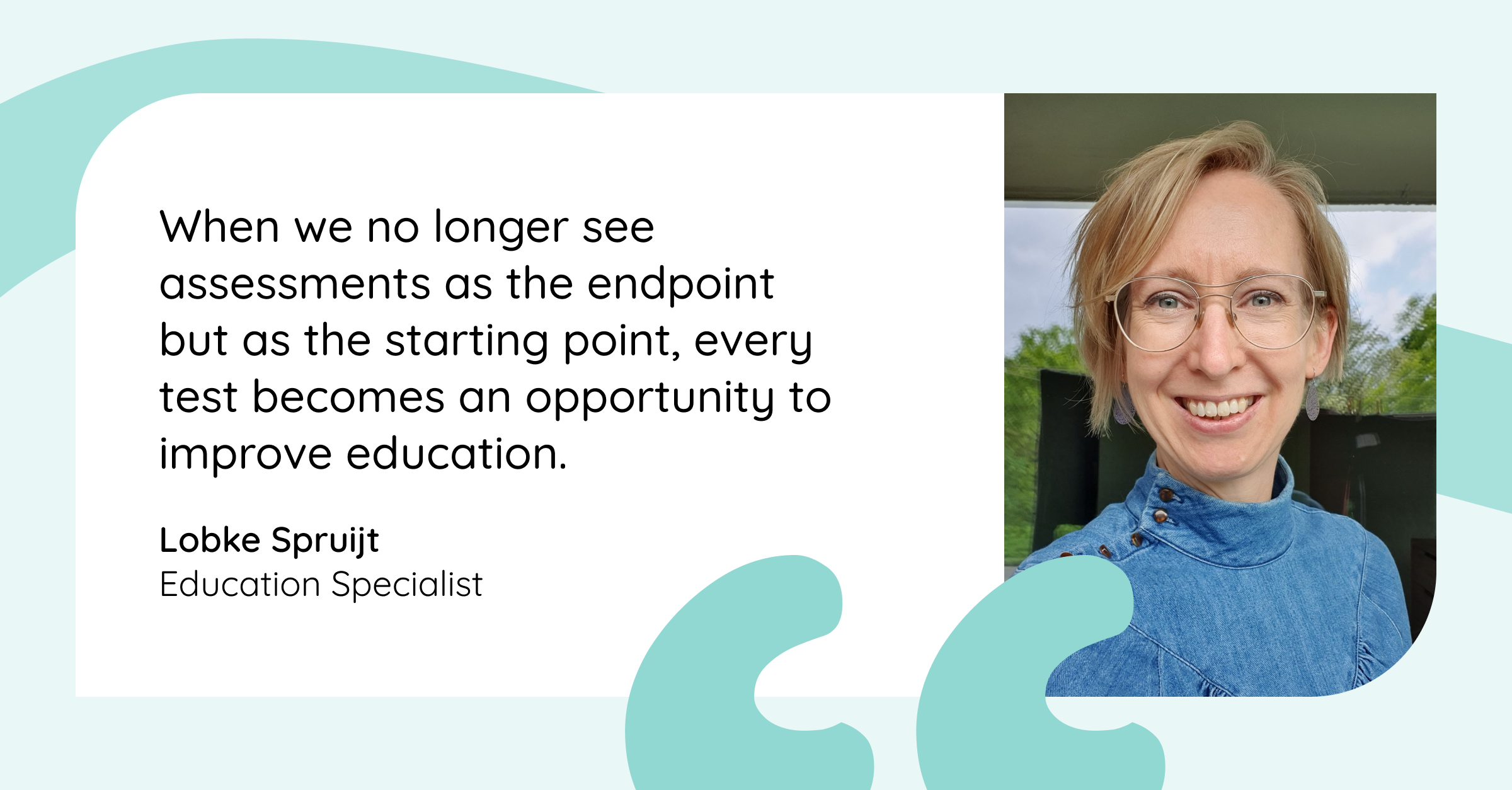Research by the Netherlands Youth Institute shows that 61 percent of young people between the ages of 12 and 30 regularly experience performance pressure. Nearly half of them feel this pressure most intensely during school or study activities, especially in the run-up to a test (see https://www.nji.nl/cijfers/prestatiedruk).
As an educational specialist, I often witness firsthand the significant pressure it can cause. Part of the tension stems from the high expectations students place on themselves. But expectations from educational programmes, parents, friends, or even social media also play a role. This pressure is especially noticeable on test days—the moment when weeks of preparation come together in a single assessment.
This raises an important question: how can we reduce the stress and pressure surrounding tests as much as possible? Aside from the content of the test itself, many organisational and technical measures can help reduce tension and create a sense of calm for students.
1. Clarity is the foundation
Clarity may be the most important factor in reducing test-related stress. Students feel more confident when they know exactly what to expect. This begins with clear communication about the test's time, location, and duration, as well as practical details such as the allowed tools and materials.
Clear, structured information within the test platform is just as important. Instructions should be easy to understand—free of noise or unnecessary details. It may seem obvious, but small uncertainties can create unnecessary tension. When students know where they stand at every moment, they can focus fully on the test itself.
2. Becoming familiar with the test environment
A digital test environment should feel intuitive. Students shouldn’t have to think about how something works—they should be able to concentrate fully on the content. This means they should know how to navigate between questions, understand how different question types function, and review their answers effectively.
A practice test at the beginning of a course or programme is a simple but powerful way to achieve this. In a safe, pressure-free environment, students learn how the system works. This familiarity significantly lowers the threshold on the day of the actual test, because the technology is no longer a source of uncertainty.
3. Supporting focus during the test
Calmness during the test itself is crucial—and the digital environment plays a major role. A well-designed test platform shows only what is necessary: no distracting notifications, no confusing menus, but a clear, structured layout for each question with straightforward instructions.
For students with specific support needs, it is also essential that they can adjust the interface to their preferences—such as enlarging the font, changing contrast settings, or using a text-to-speech function. These adjustments help create a feeling of control, which in turn reduces stress.
4. Fast and transparent feedback
Even after the test, tension often lingers. Uncertainty about the result can weigh on students for days. Where possible, it helps to provide students with a quick insight into their performance. For automatically graded questions, for example, a preliminary result can be shown immediately, accompanied by a clear explanation that the score is not yet final because open questions still need to be reviewed.*
This gives students an initial indication of their performance without prolonging the uncertainty unnecessarily. Transparent feedback not only provides clarity but also builds trust in the testing process.
Tests are an essential part of learning—but they do not need to be a source of stress. By communicating clearly, preparing students effectively, and designing test environments that are as user-friendly as possible, we can significantly reduce the pressure they experience.
As an educational specialist, I believe that tests should not only be moments of evaluation, but also opportunities to strengthen students’ confidence. A well-designed test doesn’t just help students demonstrate what they know to others — it helps them experience that they can do it. And that may well be one of the most meaningful outcomes education can offer.
* Whether this is permitted immediately after the test depends partly on the institution’s policy.


.webp)
